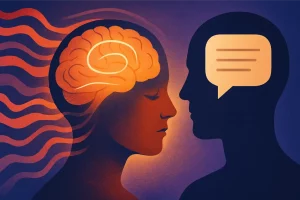Abstract
Ayahuasca, a South American psychotropic plant tea obtained from Banisteriopsis caapi and Psychotria viridis, combines monoamine oxidase-inhibiting β-carboline alkaloids with N,N-dimethyltryptamine (DMT), a psychedelic agent showing 5-HT2A agonist activity. In a clinical research setting, ayahuasca has demonstrated a combined stimulatory and psychedelic effect profile, as measured by subjective effect self-assessment instruments and dose-dependent changes in spontaneous brain electrical activity, which parallel the time course of subjective effects. In the present study, the spatial distribution of ayahuasca-induced changes in brain electrical activity was investigated by means of low-resolution electromagnetic tomography (LORETA). Electroencephalography recordings were obtained from 18 volunteers after the administration of a dose of encapsulated freeze-dried ayahuasca containing 0.85 mg DMT/kg body weight and placebo. The intracerebral power density distribution was computed with LORETA from spectrally analyzed data, and subjective effects were measured by means of the Hallucinogen Rating Scale (HRS). Statistically significant differences compared to placebo were observed for LORETA power 60 and 90 min after dosing, together with increases in all six scales of the HRS. Ayahuasca decreased power density in the alpha-2, delta, theta and beta-1 frequency bands. Power decreases in the delta, alpha-2 and beta-1 bands were found predominantly over the temporo-parieto-occipital junction, whereas theta power was reduced in the temporomedial cortex and in frontomedial regions. The present results suggest the involvement of unimodal and heteromodal association cortex and limbic structures in the psychological effects elicited by ayahuasca.
Riba, J., Anderer, P., Jané, F., Saletu, B., & Barbanoj, M. J. (2004). Effects of the South American psychoactive beverage ayahuasca on regional brain electrical activity in humans: a functional neuroimaging study using low-resolution electromagnetic tomography. Neuropsychobiology, 50(1), 89-101. 10.1159/000077946
Link to full text













